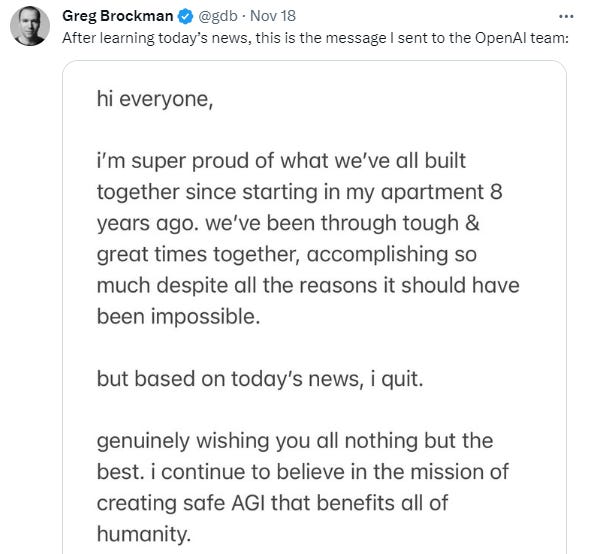10X AI (Issue #28): @sama Drama, Google's Music, and a Ping-Pong Bat Juggler
PLUS: Microsoft Ignite, Meta's Emu tools, more Google, Deforum on Discord, Niji Style Tuner, Meshy text-to-3D, and customizing GPTs for voice chats.
Happy Sunday, friends!
Welcome back to 10X AI: a weekly look at beginner-focused AI news, tools, and tips.
Let’s get to it.
This post might get cut off in some email clients. Click here to read it online.
🗞️ AI news
Here are this week’s AI developments.
1. Sam Altman is fired…then re-hired?
I usually don’t cover industry news, since my focus is on user-level product releases.
But this is such a massive ongoing story that I had to mention it.
The short of it: On Friday, OpenAI’s board of directors suddenly fired Sam Altman (co-founder and CEO) with no notice.
The main reason? Sam “was not consistently candid in his communications with the board.”
The board also asked Greg Brockman (co-founder and president) to step down as chairman but remain at OpenAI.
Greg promptly quit.
X / Twitter absolutely lost its collective shit (more so than usual).
Everyone’s feeds exploded with speculations, theories, conspiracy theories, hot takes, and memes. So many memes.
The abruptness of it all, coupled with the va…


